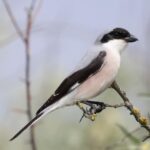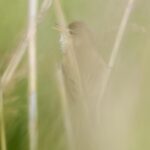Day 3 of a three day long weekend of tours today, our last day, and we were back exploring North Norfolk. It was another dull and cloudy day, but rather mild with very light winds and dry once again.
After meeting up this morning, we headed west before turning inland off the coast road. We hadn’t gone far when a ghostly shape flew across the road in front of us – a Barn Owl. It landed on a post by a gate, but flew off behind the hedge as we pulled up. We didn’t see it disappear across the field so we had a hunch it might have landed on another post further along, and as we looked round the hedge there was the Barn Owl. It flew again, across the grassy paddock, but landed on the fence the other side in full view.

The Barn Owl stayed standing on the post for some time – now we could get a really good look at it. Eventually it dropped down into the grass and appeared to catch something. It flew back up to the post briefly, and then disappeared off silently through the trees behind. There seem to be rather few Barn Owls out hunting in daylight hours at the moment, presumably because they are not struggling to hunt at night, so it was great to get one out during the morning.
Our first scheduled stop of the morning was at Thornham. There had been a couple of Waxwings here for the last few days, feeding on windfall apples in the orchards, and we were hoping to see them. Reports had suggested that they had flown off yesterday afternoon, but thankfully we received a message to say they were back this morning.
When we arrived, we found a couple of cars and several people with binoculars standing around in the car park not really looking anywhere. We decided to check the orchard the Waxwings had been favouring yesterday and were on our way over when we looked up into the tall tree by the entrance and there was a Waxwing! We got it in the scope and had a nice look at it.
Waxwings are very smart birds – from the punk crest to the delicate wing markings with red waxy tips to the wing coverts and yellow tip to the tail. It dropped down into the orchard and disappeared, presumably to feed, but a few minutes later it was back up again in another tree. This time it flew across and landed on top of a telegraph post on the other side of the car park.
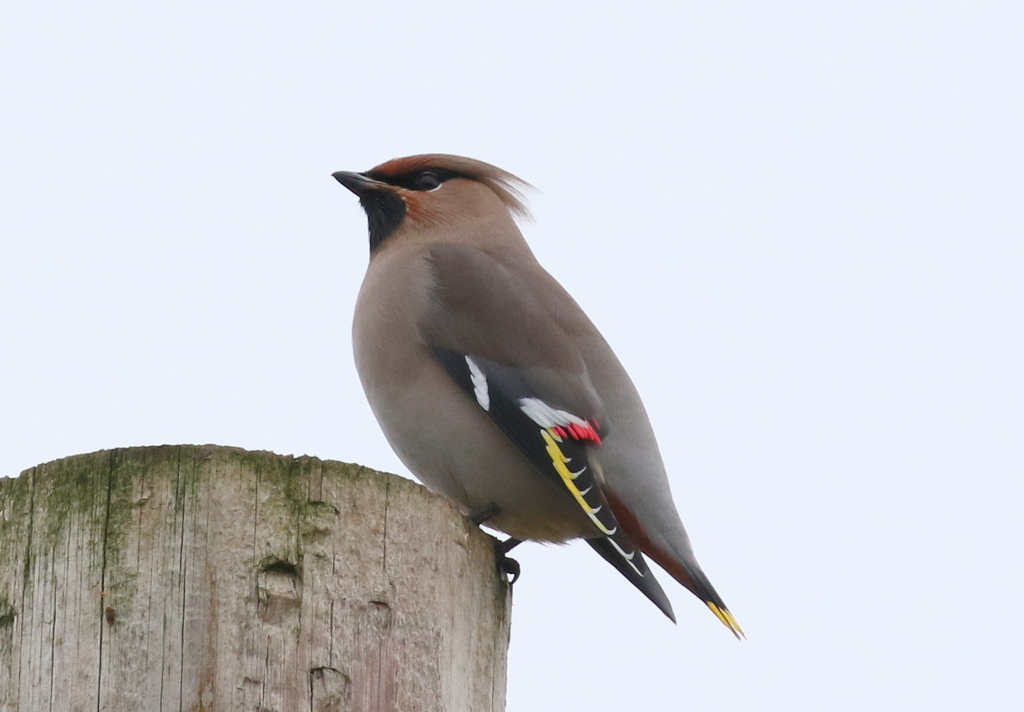
The Waxwing stayed on the top of the post for some time. There was no sign of the second bird which has been with it in recent days, so perhaps it was looking for it, or any other Waxwings which might be around. It meant we had a great opportunity to admire it. Eventually, the lone Waxwing flew over us calling and dropped back down into the orchard.
There were a few other birds here. A couple of Fieldfares were in the tall tree when we first located the Waxwing, and more appeared up from the orchard at one point, along with a few Redwings and a Song Thrush.
However, the other stars of the show were across the road, a huge flock of hundreds of Linnets on the wires across a weedy field. They kept flying down to feed, in flocks of several hundred at a time, before flying back up to the wires. Linnets used to be common farmland birds here but have declined substantially in recent years, so it is great to see such a large number and goes to show what can happen when food is left for them.
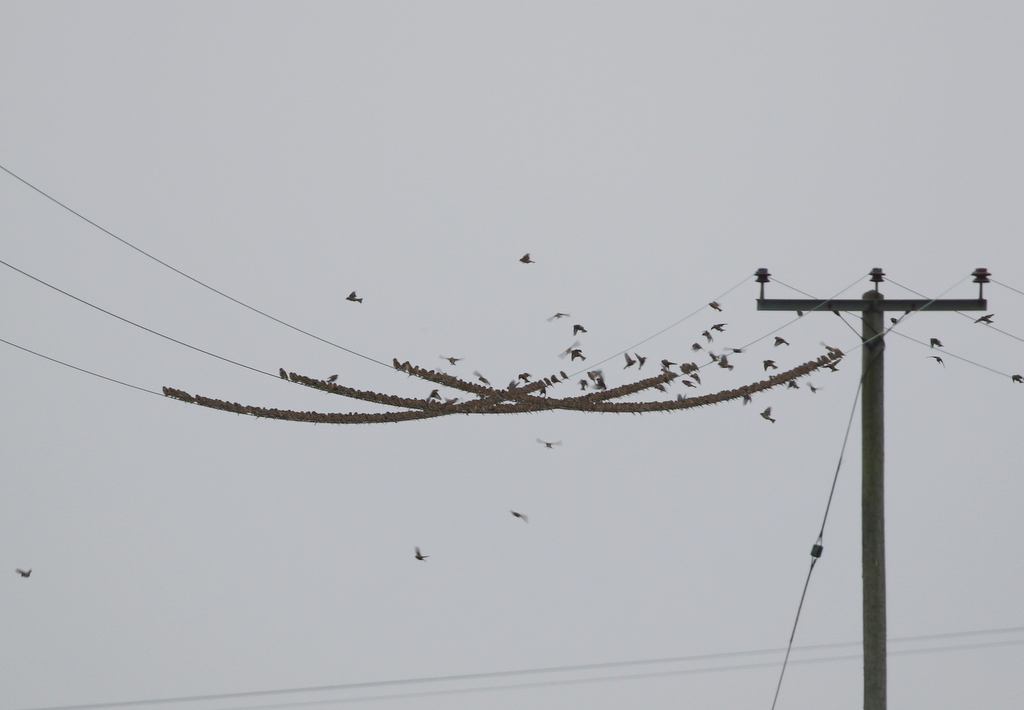
It was just a short drive from here round to the harbour. As we drove down the road by the saltmarsh, we could see several people with telescopes pointing down into the vegetation. When we got out, we could see they were watching a flock of Twite. We got out of the car and had a look at them – we could see their orange breasts and yellow bills, which in winter set Twite apart from Linnets. We could also hear the nasal, twangy ‘tveet’ calls from which they get their name.
This is another species which used to be much more common here, but it is not the loss of habitat in Norfolk which is the problem, as they feed mostly out on saltmarsh. Twite are just winter visitors here, and these birds come from the Pennines where the breeding population of Twite has declined markedly in recent years. Thornham is one of the last regular wintering sites, and there are just 20-30 here these days.
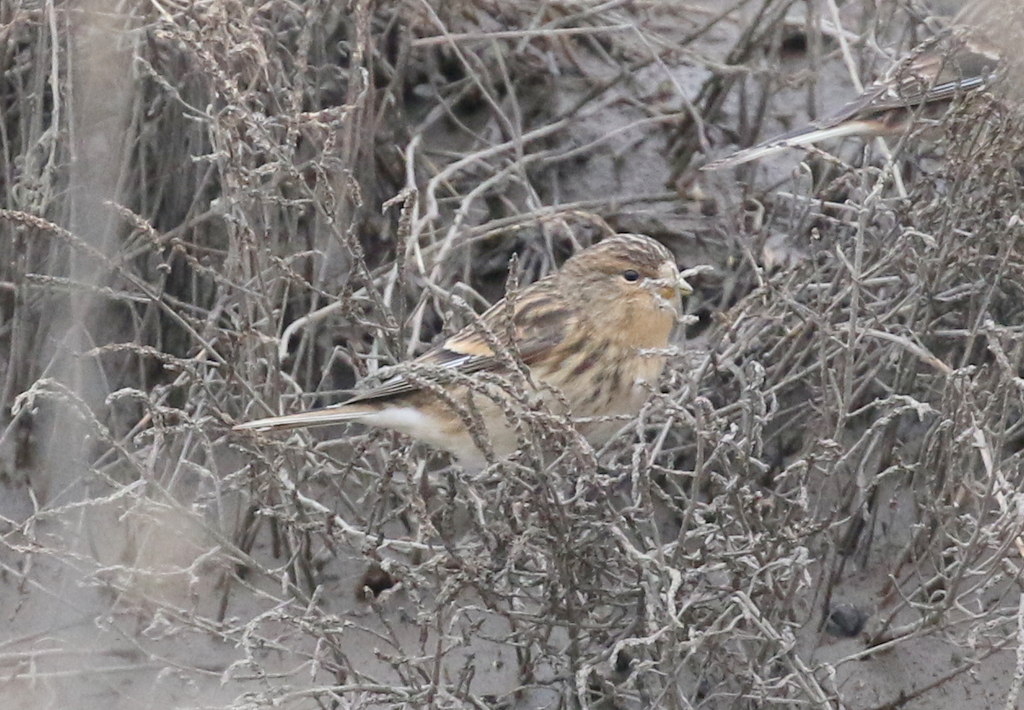
It was proving to be a successful morning, so after admiring the Twite we made our way round to Titchwell next. As we made our way out onto the reserve, we had a quick look at the feeders by the visitor centre, but there were just a few Chaffinches, Goldfinches and the commoner tits here today.
Walking up the main path, we scanned the ditches either side carefully, looking for any movement. One of the group spotted something lurking down in the vegetation and sure enough it turned out to be the Water Rail. It scuttled away deeper in, but then worked its way back towards us and we had a nice view of it feeding in the rotting leaves down in the water.
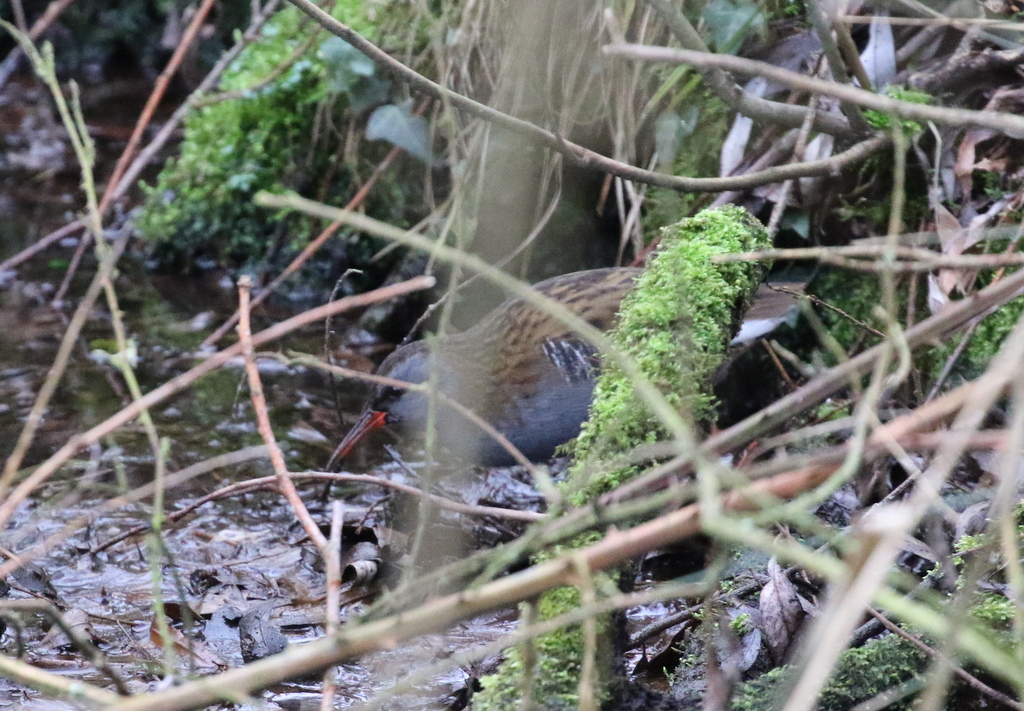
Next stop was by the Thornham grazing meadow pool. At first it looked rather quiet here, but scanning carefully around the edges we found a Water Pipit creeping around on the mud on the edge of the reeds. We got it in the scope and everyone had a look at it – noting particularly its pale, off-white underparts neatly streaked with black – before it disappeared back into the reeds.
Out on the freshmarsh, the water level is still very high but there were fewer ducks than of late. There were still plenty of Shelduck and Teal, plus a few Gadwall. Several Common Pochard were lurking around the small island towards the back and a small group of Tufted Ducks were diving out in the middle of the water.

With the water level high, there are few waders on here at the moment, apart from a few Lapwings and Golden Plover. A little more of the top of the island by the junction with the path to Parrinder Hide was visible today. As well as the Lapwing on here, and a single Golden Plover, a small group of Knot had flown in to bathe, along with a few Dunlin.
The tide was out and the Volunteer Marsh was rather dry now. We managed to get a Grey Plover in the scope, and could see a scattering of Curlew, Redshank, Knot and Dunlin out on the mud. We also had good views of a Black-tailed Godwit in the channel at the front by the main path.

Out at the Tidal Pools, we found where all the ducks were hiding. There were lots of Shoveler out here today, all asleep with their bills tucked in, as well as more Teal. Several Wigeon were feeding on the islands of saltmarsh. There were about half a dozen Pintail here too, including some smart drakes, though they were busy feeding with their heads under water for much of the time. A few Little Grebes were diving out on the pools.
Eight Avocets were sleeping out on the end of one of the muddy spits, a slight increase on the five that we have seen here recently. Otherwise, there were not many other waders on the Tidal Pools today, just a few more Black-tailed Godwits and Redshanks.

Most of the interest at Titchwell today was out on the sea, so we hurried out to the beach. The tide was out, so everything was distant from the top of the beach, but we scanned from the dunes to see what we could see. There has been a little group of Long-tailed Ducks here for a while now, and we could see them diving close to the shore away to the west of us.
Scanning through the Goldeneye, we could see two much larger ducks, with a prominent wedge shaped head and bill – Common Eider. There are always several Common Scoter offshore here but it took us a bit of time to find the single Velvet Scoter. It was rather distant, but everyone had a look at it through the scope and managed to see the white in the wings which is one of the easiest ways to distinguish Velvet Scoter from Common Scoter. A small grebe offshore with clean black cap and white cheeks was a winter-plumaged Slavonian Grebe.
With the Long-tailed Ducks close inshore today, we decided to walk out across the sand towards Thornham Point to get a better views. With only very light winds today, it was pleasant out in the open on the sand. We stood on the shore opposite where the Long-tailed Ducks were feeding and had cracking views of them, swimming on the sea, diving for shellfish or preening. There were at least nine of them, including several stunning males. Close up, we could see the striking elongated central tail feathers on the drakes, from which they get their name.
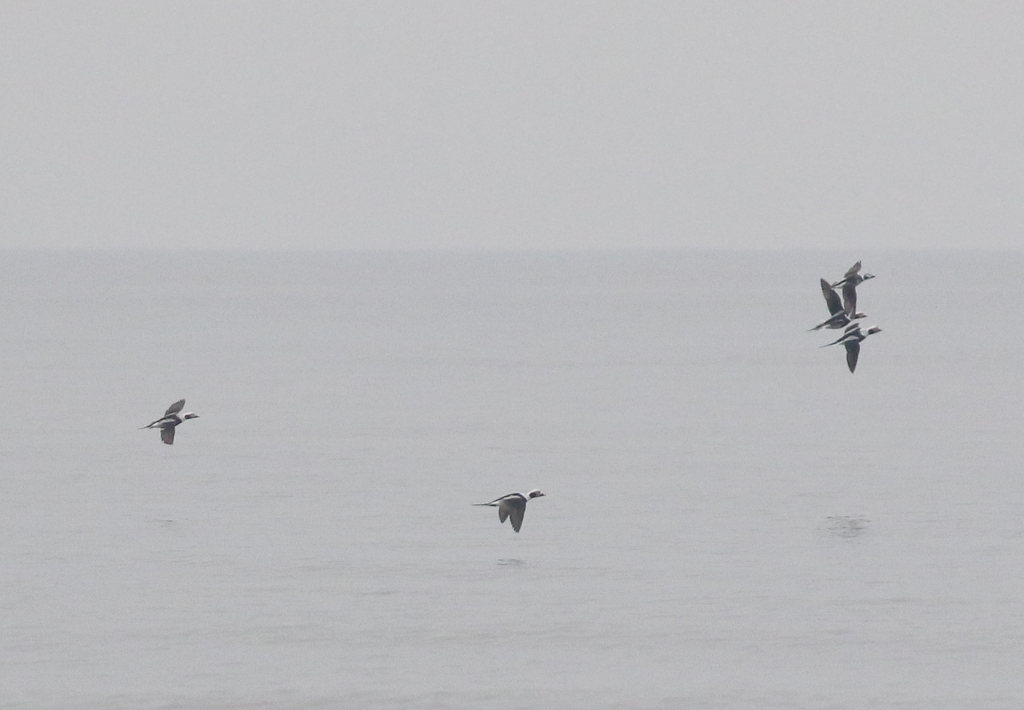
After we had enjoyed a great look at the Long-tailed Ducks, they had a brief fly round for us, before landing back down on the water a little further out. There were several Common Scoter here too, close inshore, and from this range we could even see the yellow stripe down the top of the bill of the otherwise black drake.
Some of the other divers and grebes had apparently drifted off further west, so we walked down along the shore to Thornham Point. There were lots of waders out on the beach here, mainly Bar-tailed Godwits, walking round probing in the sand with their long, slightly upturned bills. There were a couple of Dunlin and Oystercatchers with the godwits and a few Sanderling and Turnstones flew past along the edge of the sea.
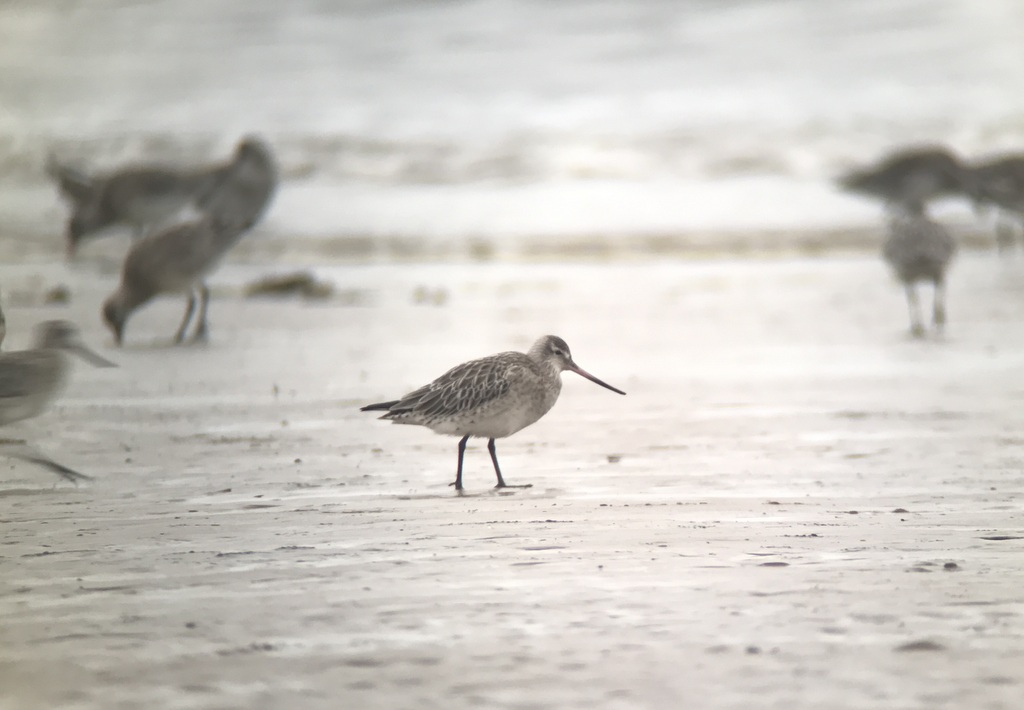
As we arrived at Thornham Point, several people were just leaving. They had not seen the Black-necked Grebe which was supposedly down this end. We stopped to scan the sea, but it was hard to see the birds being so low down on beach, they were disappearing in the light swell despite the sea being fairly flat calm. They were also diving all the time. We did manage to find the Black-necked Grebe, briefly but we lost track of it again before everyone could get to see it.
It was getting late now, and we still hadn’t eaten. After a brisk walk back along the beach we headed straight back to the visitor centre for a rather late lunch.
After lunch, we made our way over to Snettisham. The light was already going by the time we arrived. Looking out across the Wash, there was a vast expanse of mud – it was not a big tide today, and the tide was just starting to come in. The waders were scattered widely across the mud, apart from a couple of big groups of Oystercatchers which were huddled up together. There were lots of ducks here too, especially Shelduck out on the water’s edge and Mallard gathered around the channels in the mud. We had a quick walk up along the tide line but there was no sign of the Shorelark here now today.
We had come here mainly looking for owls. There was no sign of any out hunting yet, but scanning the bushes carefully we found a Short-eared Owl roosting under bramble. A second Short-eared Owl was roosting in the brambles nearby. They were both still asleep, with their heads tucked down, but they did look round a couple of times so we could see them properly through the scope.
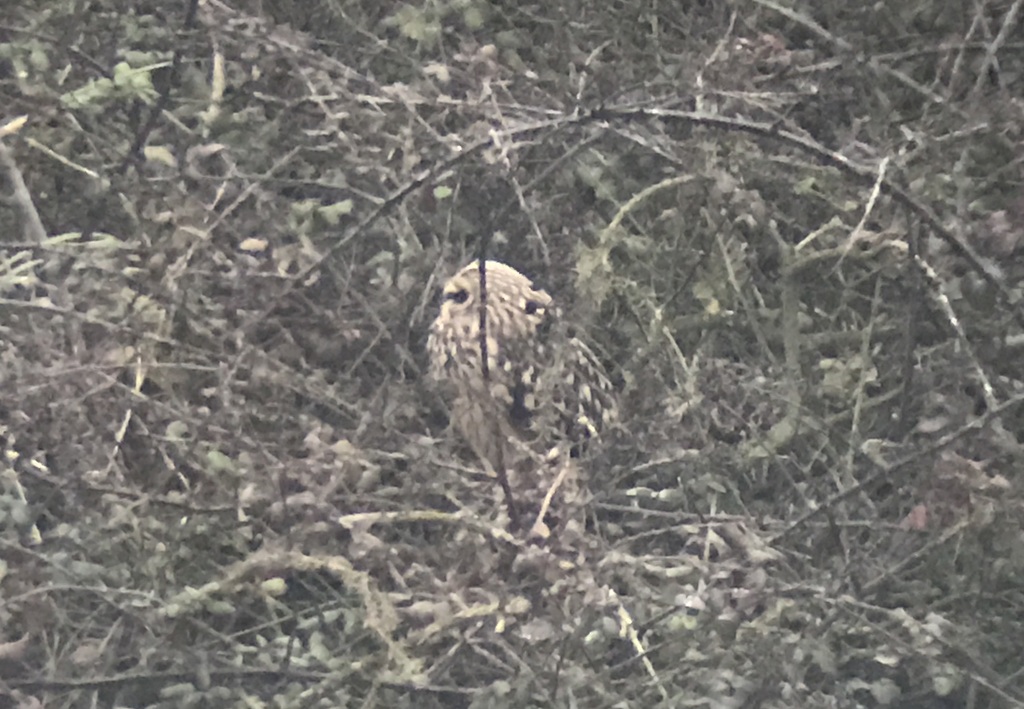
Short-eared Owls can often be found out hunting in the late afternoon, so we stood here for a few minutes to see if they might wake up and start flying round, but they were obviously not hungry enough at moment. They are probably finding enough food at night.
We saw a few other birds here. There were several Goldeneye on the pits, as well as a couple of Little Egrets. Some Greylag were on the pits, but more were gathering noisily in the fields just inland, before going to roost. There is a large roost of Pink-footed Geese on the Wash off Snettisham, but there was no sign of any here yet.
It was starting to get dark so it was time to make our way back. As we did, we could see long lines of dots approaching in the sky. We watched and listened as thousands and thousands of Pink-footed Geese flew in from the fields and headed out towards the Wash, coming in to roost. We stayed for several minutes as more and more birds came over. It was stunning sight and a great way to end the three days.
